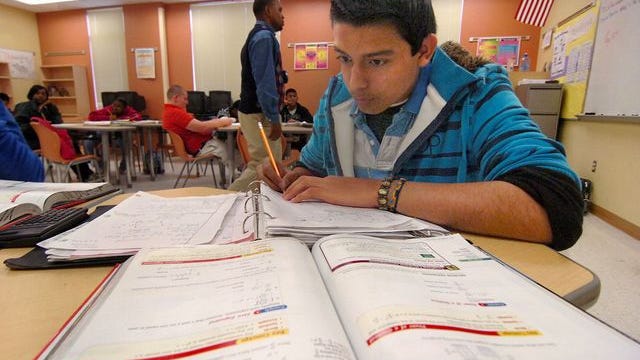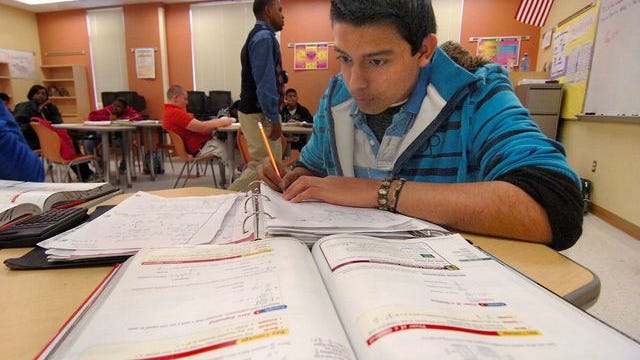
Math test scores from the nation’s fourth and eighth graders fell this year, further demonstrating the impact of COVID-19 and remote learning on academic progress.
Yet while Florida students’ performance also declined on the National Assessment of Educational Progress the state’s fourth and eighth graders improved in ranking in comparison with those in other states.
The test is an assessment given between January and March every two years to a random sampling of students in every state, predominantly in urban schools. On the Treasure Coast students at Forest Grove Middle School in St. Lucie County and Hidden Oaks Middle School in Martin County took the test.
School grades:They’re in spannd they show students improved lespanrning once they returned to school
Florida rea:About hspanlf of Trespansure Cospanst third-grspanders pspanss Floridspan respanding test, IRC bespants stspante spanverspange
Results released last month showed Florida fourth graders ranked third in the country in average reading scores and fourth in math. In 2019, Florida’s fourth graders ranked sixth in reading and fourth in math.
Eighth graders improved slightly, but average scores still ranked near the bottom of the 50 states in math, improving from 35th in math in 2019 to 32nd. That still was Florida’s highest ranking in the subject, according to state officials.
Florida eighth graders improved from 22nd to 21st in reading.
Comparing with other states
The state uses the scores to compare its students to those in other states. Florida’s curriculum could be altered if state educators feel students need to improve in specific areas.
“They do look at that data to ensure that the standards we are expecting teachers to teach in each grade level are going to ensure that Florida students are on par or ahead of their peers in other states,” said Helen Wild, St. Lucie County schools deputy superintendent. “It does have a value to us, and it does give us comparative information, but it doesn’t drive our daily instruction.”
While Treasure Coast students are unlikely to be by the test, it’s still important because it gives the state an idea of how its students compare to those in other states, Wild said.
“This is really the only test that is administered nationwide that gives us a comparison from state to state, because individual state standards vary,” Wild said.
Every state’s testing is unique, so it’s difficult to compare student performance from one state to another, she explained, but all students who take the National Assessment of Educational Progress take the same test, so comparisons can be made.
Reading scores nationally stayed mostly the same, test results show, but math scores took a dip across the country.
In Florida, about 19% of the fourth graders scored below “basic” skills in math, while about 26% of the nation’s fourth graders scored below basic. In eighth grade, 42% of Florida students scored below “basic,” while 40% of the nation’s eighth graders scored below basic in math.
In 2019, 13% of the fourth graders and 34% of the eighth graders scored below “basic” skills in math.
Some declines were expected
The decline in math scores is to be expected, according to Indian River County schools Superintendent David Moore, after 2½ years of the COVID-19 pandemic, where distance learning may have caused students to miss out on instruction.
“Math is very sequential. It goes through a very specific order,” he said. “The skills build on top of each other. And when you miss so many rungs of a ladder, it becomes extremely hard to move on.”

Locally, few changes will be made because of the test scores, Wild said.
“It doesn’t help us at the school level in making individual student or districtwide curriculum and instruction decisions,” Wild said. “(The test) doesn’t drive instruction, the way state and local assessments do. It really gives us a benchmark of how we are doing as a state.”
The main question parents and educators wanted to know, she said was, “How did our students bounce back after being out of school?”